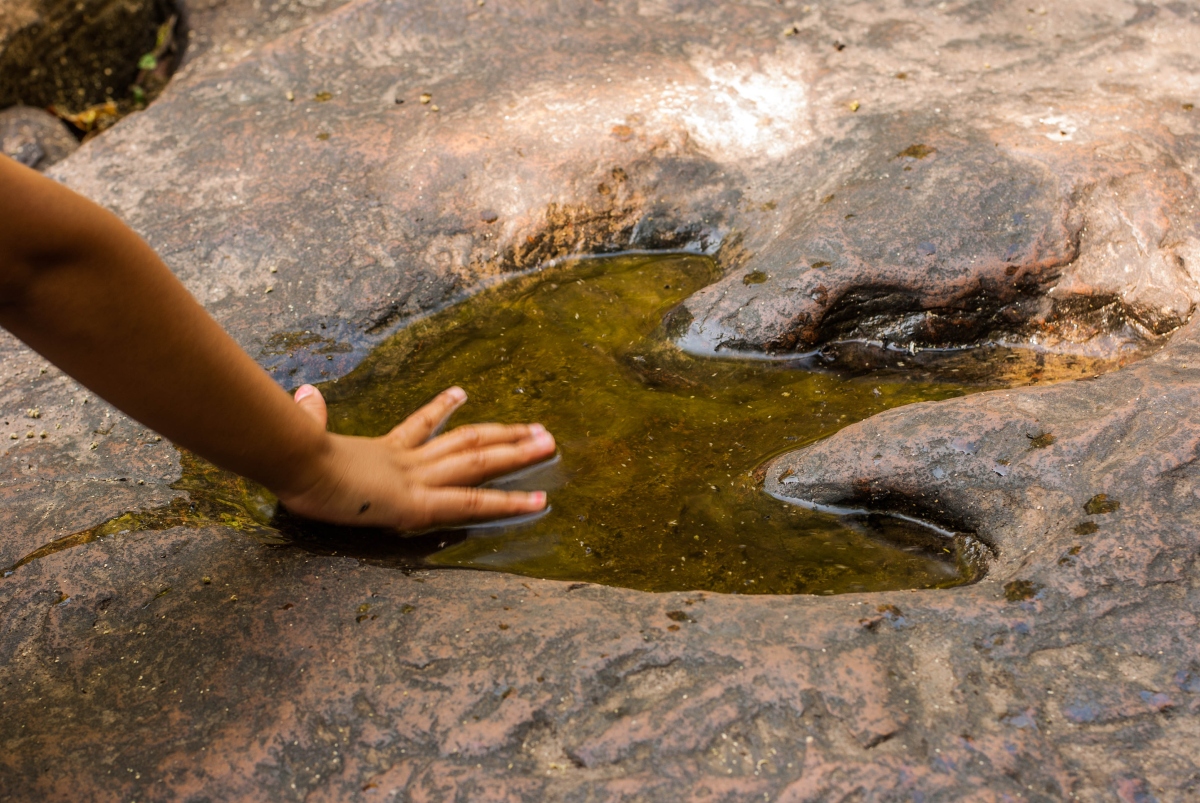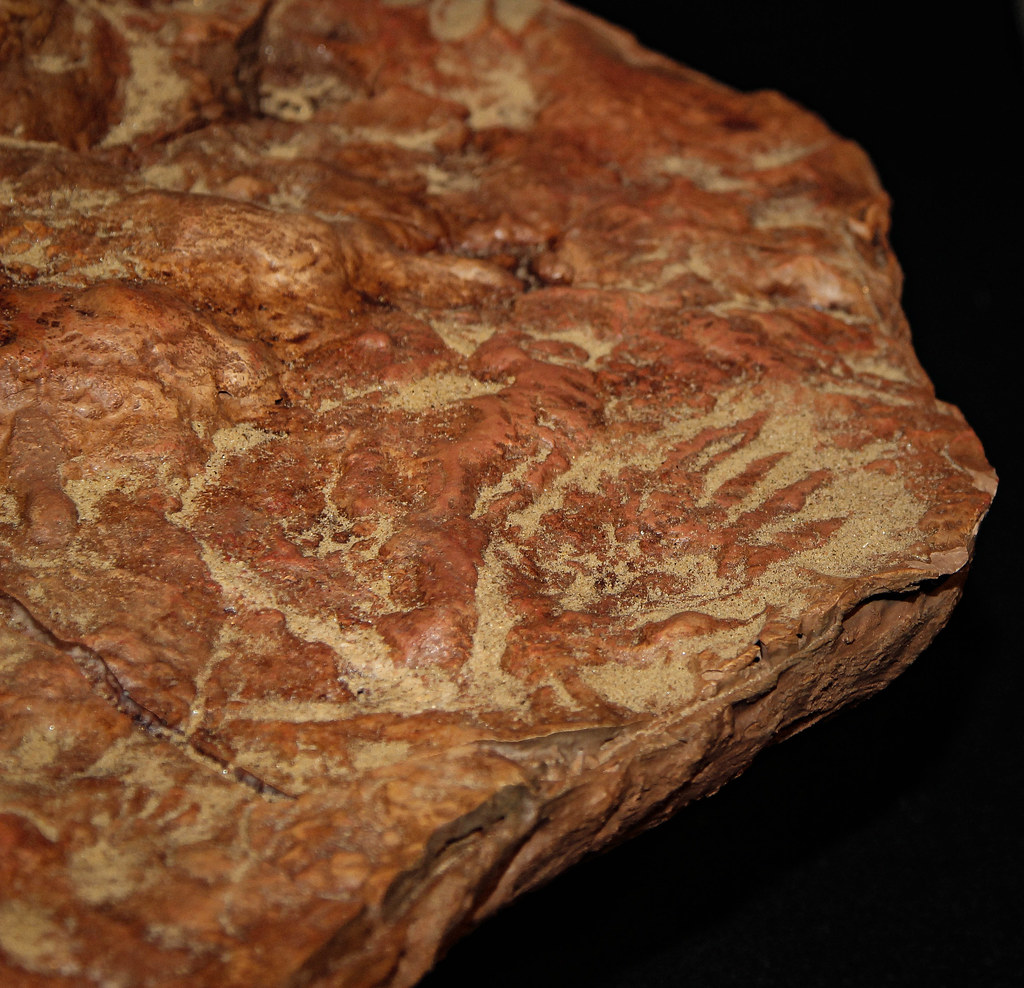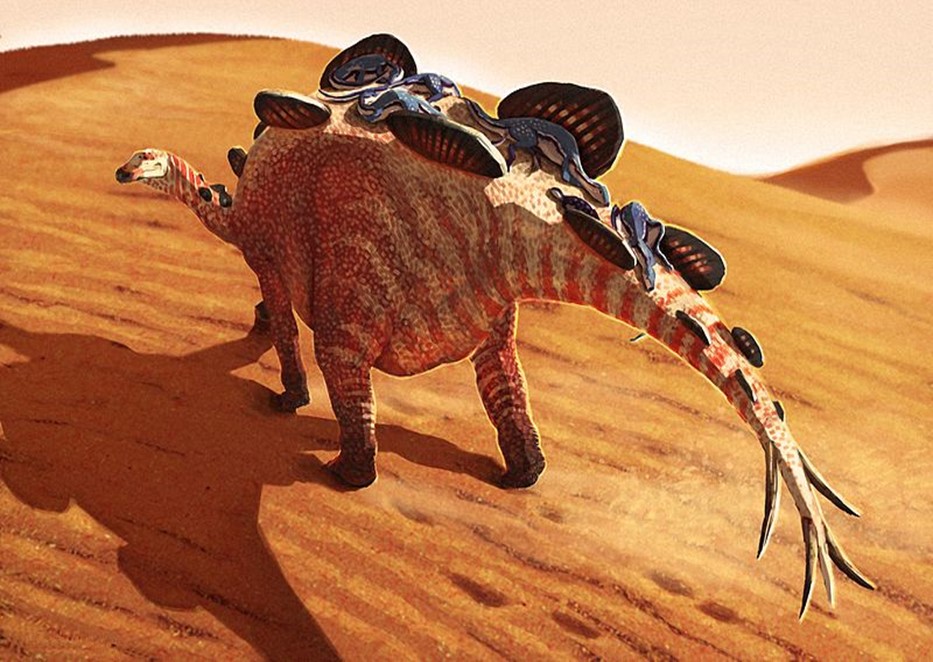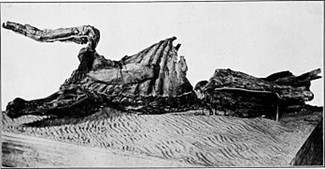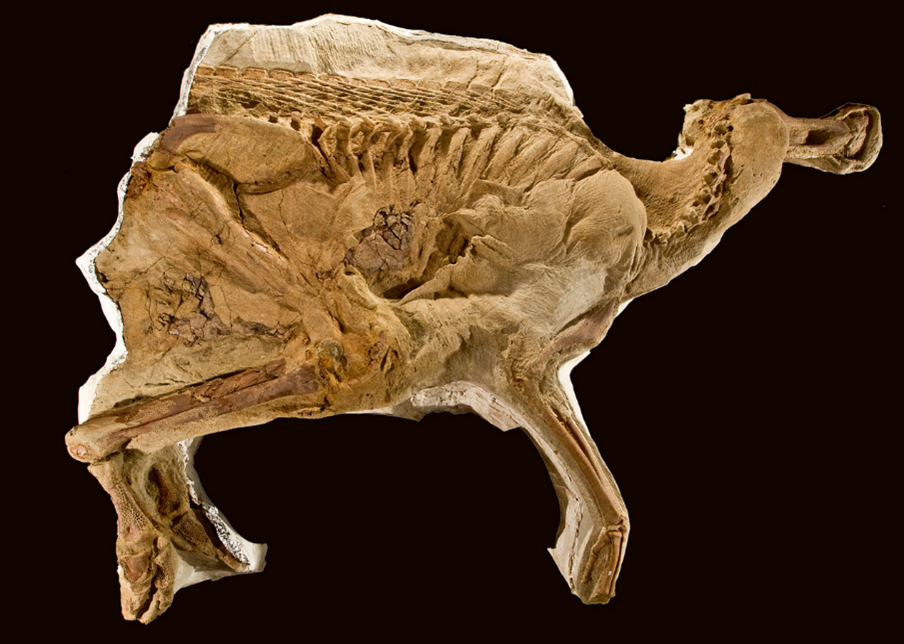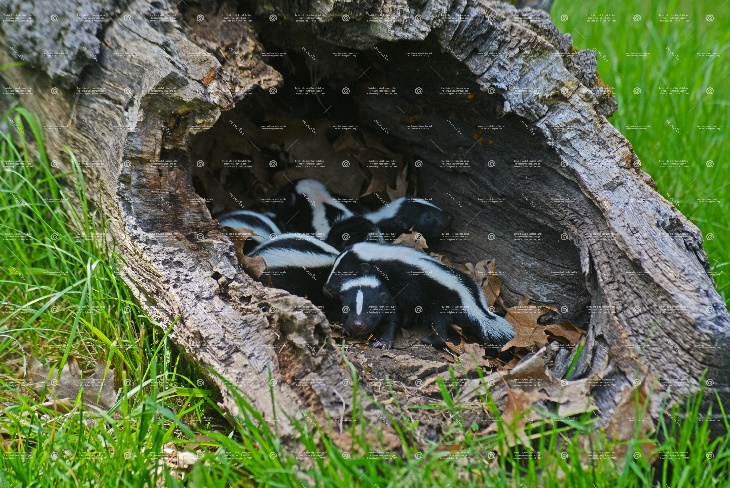
I don’t know who makes up the names for groups of animals: a herd of cows, a pack of wolves, or a litter of kittens. Some of the group names are funny: a business of ferrets, a kettle of hawks, a bloat of hippopotami, a shiver of sharks, a stench of skunks, and an ambush of tigers. But whoever makes up those names certainly got it right for Tyrannosaurus. A group of them is called a terror of tyrannosaurs. Several species of dinosaur fall into the category of tyrannosaur, such as Albertosaurus, Gorgosaurus, and Daspletosaurus. The most famous, of course, is Tyrannosaurus rex. All of them are among the largest meat-eating creatures that ever lived.
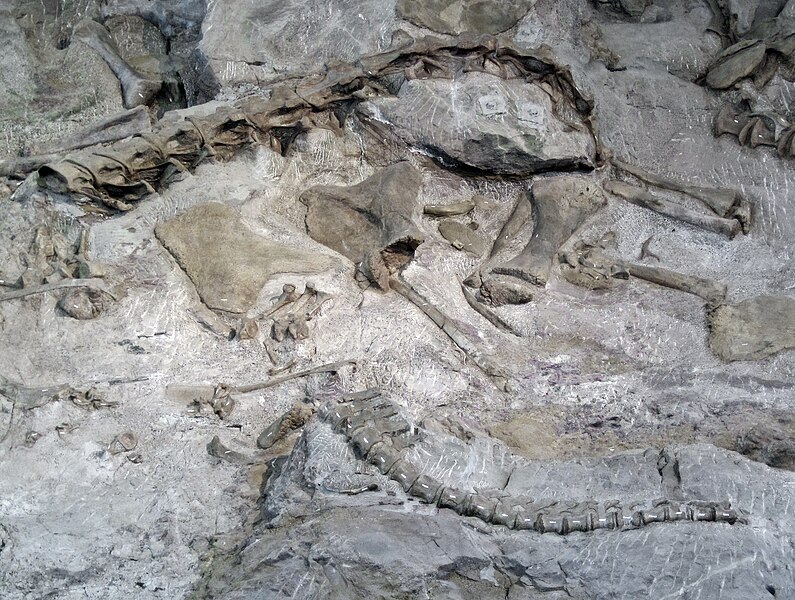
Scientists don’t know whether or not Tyrannosaurus lived or travelled in groups. There are only two clues that could help with this. Sometimes paleontologists find bonebeds that contain many dinosaurs of the same kind that all died at the same time. That might happen if a flash flood killed a large herd of animals. For example, in Alberta, Canada, thousands of bones of the dinosaur Centrosaurus were found in a bonebed measuring about 1 ½ square miles. This is strong evidence that centrosaurs travelled in large groups. Dinosaur bonebeds for Protoceratops, Avimimus, Pinacosaurus, Edmontosaurus, and others have been found. But no bonebeds of Tyrannosaurus or any other tyrannosaur have ever been discovered.
The other evidence of animals living or travelling in groups is footprints. Often just one, single footprint is found. Other times a trackway is found, showing the progress of a single dinosaur.
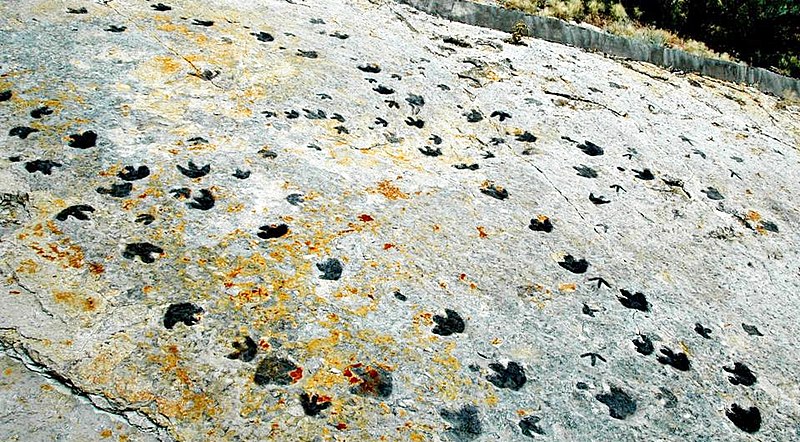
Sometimes there are many footprints, showing the travels of a whole herd. Prior to 2011, only single footprints of tyrannosaurs had been found. Though it’s hard to say for sure which made a footprint, scientists can make educated guesses. The one most confidently attributed to Tyrannosaurus rex was found in Montana in 2007. The Montana footprint was 2 ½ feet long with slender toes, and it was found in the right age of rock for Tyrannosaurus. Also, its toes were correctly positioned for T-rex, so paleontologists are fairly certain they have correctly identified it. But that print doesn’t tell us much about how Tyrannosaurus lived and moved.
Some scientists thought that because they had never found a tyrannosaur bonebed or more than one footprint of a tyrannosaur that Tyrannosaurus was a solitary creature, perhaps only associating with others of its kind for mating. Many of today’s predatory birds, such as eagles and hawks, are largely solitary. That way they don’t have to compete for food. But in 2011 a trackway showing three tyrannosaurs walking together made scientists reconsider the idea of tyrannosaurs as loners.
In the forests of northeastern British Columbia, paleontologists uncovered a series of tracks showing three large dinosaurs walking side by side. A total of seven footprints were found: three from one dinosaur and two from each of the other two, but all the footprints were made at the same time, and they are clearly walking together. The prints are so well preserved that scientists can even see scales on the dinosaurs’ feet. The size of the tracks and the size and positioning of the toes clearly make these tyrannosaur tracks. However, it’s not possible to know which species of tyrannosaur they are from.
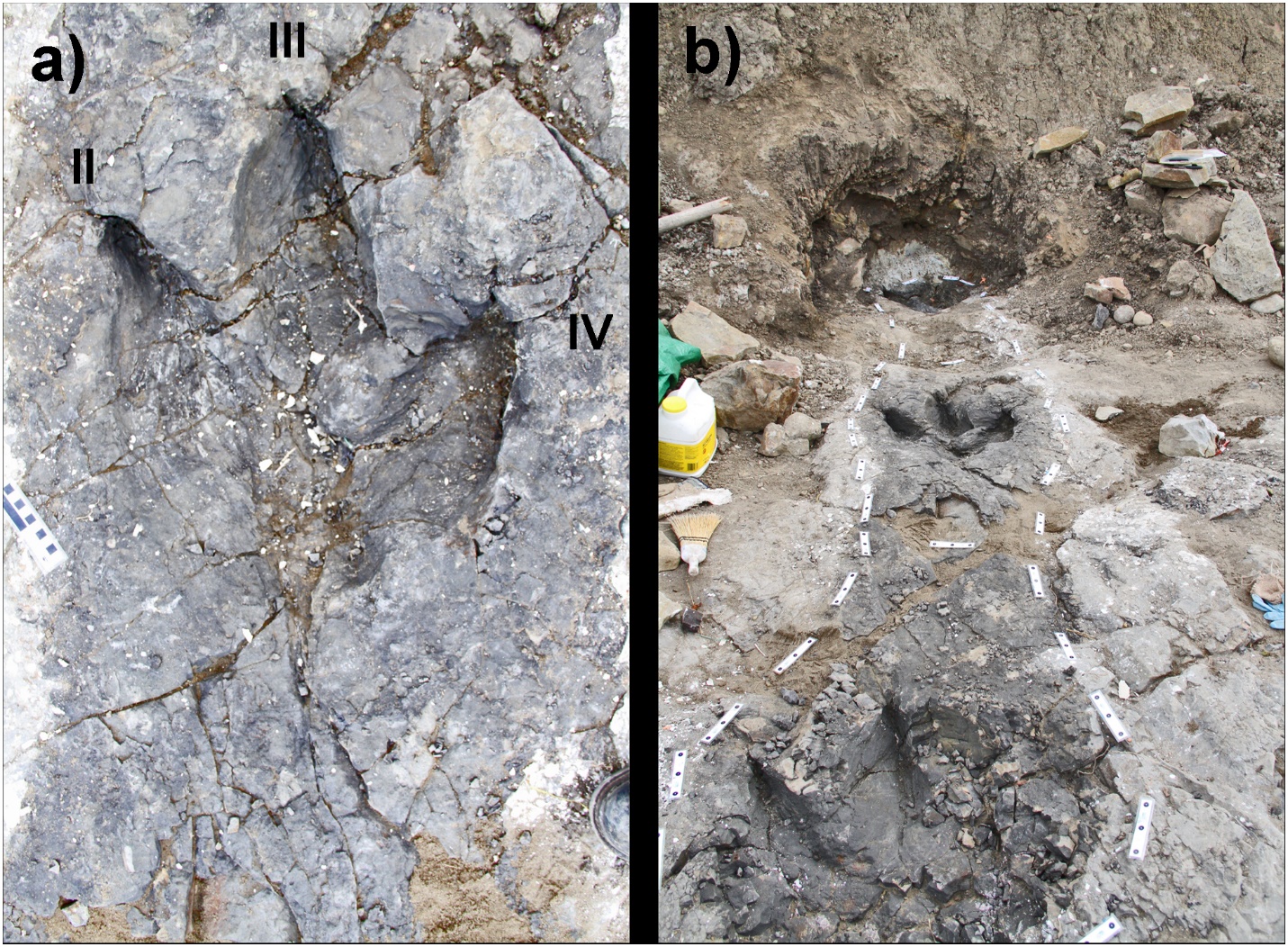
The size of the footprints does indicate that the creatures were of a similar age, different scientists estimating perhaps 25, 26, and 29 years old. The size also indicates their approximate height: 7.5 to 9.4 feet tall, measured at the hip. Dinosaur height is usually measured at the hip because most of them didn’t hold their heads at a consistent height. By knowing the height of the animal and measuring how far apart the footprints are, scientists can determine how fast the dinosaurs were going. When scientists did the math for these footprints, they concluded that these three dinosaurs were going 3.9 to 5.2 m.p.h. However, in 2021 researchers from the Netherlands made a computer reconstruction of a Tyrannosaurus walking, and they concluded that its top speed was only about 3 m.p.h. More evidence is needed to figure out how fast a tyrannosaur could walk.
Still the trackways give a tantalizing look at the life of a tyrannosaur, no longer a loner, but a friendly guy who liked to hang out with his terror of friends.
Make up a name for a group of you and your friends. Please put it in the comments below!
Sources (Click Me!)
Bryner, Jeanna. “Tyrannosaur Footprint Found in Montana.” Live Science.” 11 Oct. 2007. https://www.livescience.com/1939-tyrannosaur-footprint-montana.html
Burns, M. E., T. A. Tumanova and Philip J. Currie. “Postcrania of Juvenile Pinacosaurus grangeri (Ornithischia: Ankylosauria) from the Upper Cretaceous Alagteeg Formation, Alag Teeg, Mongolia: Implications for Ontogenetic Allometry in Ankylosaurs.” Journal of Paleontology. 2015. Vol. 89, pp. 168-182. https://pubs.geoscienceworld.org/jpaleontol/ article-abstract/89/1/168/139797/Postcrania-of-juvenile-Pinacosaurus-grangeri.
Choi, Charles Q. “Tyrannosaurus Trackways Reveal a Dinosaur’s Walk.” Popular Mechanics. 23 July 2014. https://www.popularmechanics.com/science/animals/a10933/ tyrannosaurus-trackways-reveal-a-dinosaurs-walk-17016027/
Evans, D. C., D. A. Eberth, and M. J. Ryan. “Hadrosaurid (Edmontosaurus) Bonebeds from the Horseshoe Canyon Formation (Horsethief Member) at Drumheller, Alberta, Canada: Geology, Preliminary Taphonomy, and Significance.” Canadian Journal of Earth Science. 2015. Vol. 52, pp. 642–654. https://cdnsciencepub.com/doi/pdf/10.1139/cjes-2014-0184?download=true.
Gamillo, Elizabeth. “New Study Finds T-rex Walked at a Slow Pace of Three Miles Per Hour.” Smithsonian Magazine. 23 April 2021. https://www.smithsonianmag.com/smart-news/new-study-finds-that-t-rex-walked-at-slow-pace-of-3-miles-per-hour-180977572/
“Largest Dinosaur Graveyard Found in Alberta.” The Canadian Press. 17 June 2010. https://www.cbc.ca/news/canada/largest-dinosaur-graveyard-found-in-alberta-1.874716
McCrea R.T., L.G. Buckley, J.O. Farlow, M.G. Lockley, P.J. Currie, et al. “A ‘Terror of Tyrannosaurs’: The First Trackways of Tyrannosaurids and Evidence of Gregariousness and Pathology in Tyrannosauridae.” 30 July 2014. PLoS ONE Vol. 9, p. 7: e103613. doi:10.1371/ journal.pone.01036
Title Image: Stock photo shows a dinosaur footprint in the ground. Footprints in Texas have been revealed as drought persists.
NEENAWAT/GETTY
